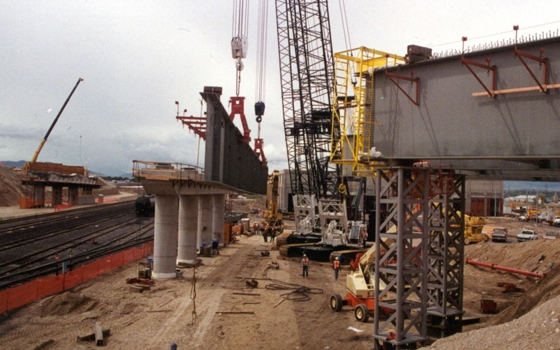Resource-rich Qatar should establish an international infrastructure investment bank with a balance sheet capacity of $300bn in view of $50tn funding required for the sector globally, according to the Institute for Infrastructure Studies (IIS).
The concept is to establish by 2015 a new specialist institution located in Doha and London with initial capital of not less than $5bn increasing over five years to $15bn thereby giving a balance sheet capacity of about $300bn, IIS director Anthony Holmes told the Qatar Banking Summit, organized by Meed, in association with the Qatar Central Bank, the Qatar Financial Markets Authority and the Qatar Financial Centre Regulatory Authority.
The IIS will be based in Doha with offices in London and in due course in the US.
The mandate of the proposed bank will be to finance the development phase (i.e. construction through to the commencement of operation) of major complex infrastructure projects globally, he said, explaining how global infrastructure bubble provides a significant opportunity for Qatar's financial sector.
It will become the global center of expertise in this substantial asset class and utilize its knowledge base and balance sheet to command a leading position in the syndicated financing of these major assets, he said.
"Qatar finds itself in the unique position of being able to use its considerable investment in domestic infrastructure to dominate this asset class and to profit from constraints and impediments likely to be experienced by established financial institutions," he said.
Stressing that it (the proposal to set up an international infrastructure investment bank) is an opportunity that should not be overlooked or discarded without detailed evaluation, Holmes said the OECD (Organization for Economic Co-operation and Development) estimates that the global demand for infrastructure investment until 2030 is expected to be around $50tn, which approximates to global gross domestic product (GDP) of 2012.
"There is a deeper issue confronting this large global asset class. In the new era of greater risk intolerance, Basel III and higher liquidity ratios, an aggregate investment of $50tn probably cannot be funded (through public private partnership model)," it said.
He said China, Brazil, India and the GCC (Gulf Co-operation Council) states have embarked on ambitious programs to expand their infrastructure frameworks to support economic transformation and greater urbanization.
Other nations have turned to investment in large scale infrastructure projects as the stimulant to accelerate the anaemic growth that has followed the deep global financial recession of the post 2008 period. These factors combine to distort the distribution of proposed infrastructure investment skewing it towards the near term, Holmes said, adding "on average, we expect this asset class to represent around 3% to 4% of global GDP but we estimate that over the period to 2018, demand equals around 6% of GDP."
In those countries that have embarked on large scale programs to transform their economic position – for example China, Qatar, India and Brazil – the figure is closer to 9% of GDP.
The current difficulty is that many states are now so burdened by the combination of high levels of sovereign debt low growth economies that they are reluctant or unable to finance their infrastructure programs through public purse, it said, adding instead they turn to public private partnership (PPP).
Holmes said PPP model – which is practiced widely in the UK, Canada and Australia – was designed to access private capital and transfer development risk to the private sector but is not a panacea as many thought and recent history indicates that PPP is only marginally fit for purpose.
Gulf Times
12 September






















































